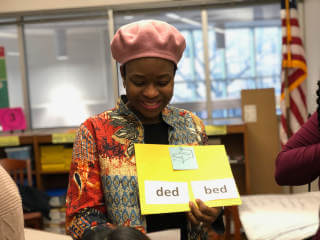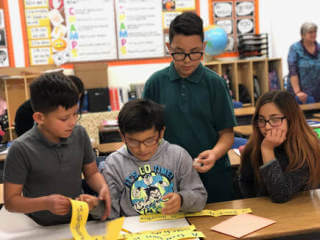It's by no accident that the first SIOP* feature has to do with writing clear objectives. After all, everything begins with a clear objective. As you will see, SIOP helps teachers make every objective count. In fact, it can be said that the first two features of SIOP (writing language and content objectives) set the tone for all other 28 features of Sheltered Instruction Observation Protocol.

Since everything we do should have its roots in the course content and language, it makes sense that we begin by identifying those objectives first. This feature challenges us to consider not what we will be teaching, but what the students will in fact be learning. SIOP asks us to begin our objectives with the acronym, SWBAT (Students Will Be Able To) as a visible reminder of the importance of the learner.
As Caleb Gattegno quipped, "Teaching is subordinate to learning." Starting off a learning objective with the learner is a good way to set everyone up for success. This is as true for the teacher as it is for her students.

When we think of writing our learning objectives, making sure our objectives are as SMART as we can make them is our #1 task. SMART is an acronym used to describe the five essential components of effective objectives. They are as follows:
Believe it or not, the more effective our objectives our written, the greater the chances are that our students will meet them. Using the SMART acronym helps us make sure we have included the essential elements of effective objectives. TESOL Trainers provides professional development on writing effective objectives. Contact John Kongsvik for more information.

Take a look at these two objectives:
Content Objective: Create and label correctly a bar graph that represents data from the class survey.
Language Objective: Explain to a partner what the bar graph shows using the phrases correlation, sample, bias, probability, outlier when stating, "As I interpret this bar graph....."
Notice the difference between the two:
The content objective deals with content only (create and label a graph) where as the language objective explains how the students will interact with that content (by using specific language to describe the graph to a peer).
Content is specific to the subject-specific content of the class, and language is specific to language-specific way that content will be expressed.
John Kongsvik and his team of trainers can provide your teachers with remote PD on the role that language plays in the content area classroom. In addition to helping teachers write effective content and language objectives that are SMART, we can show teachers how to structure their lessons and teach them so that students consciously develop their vocabulary base. Our teacher training sessions are highly interactive. Our remote PD helps teachers see how to meaningfully engage their students in an online learning environment with simple, practical ideas that any teacher can implement.
Click the button below to claim your free ebook and join our mailing list.